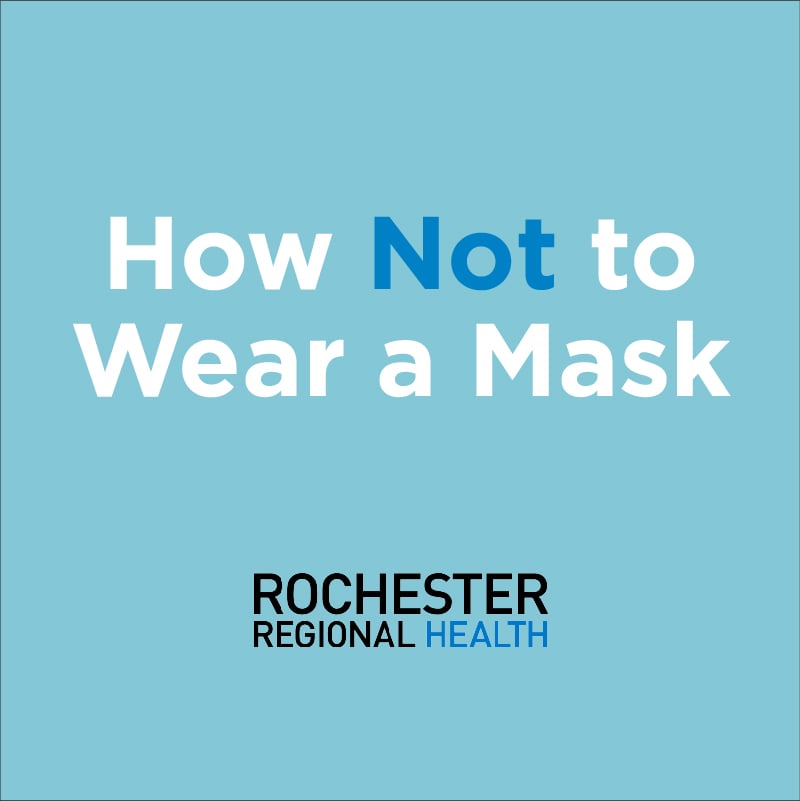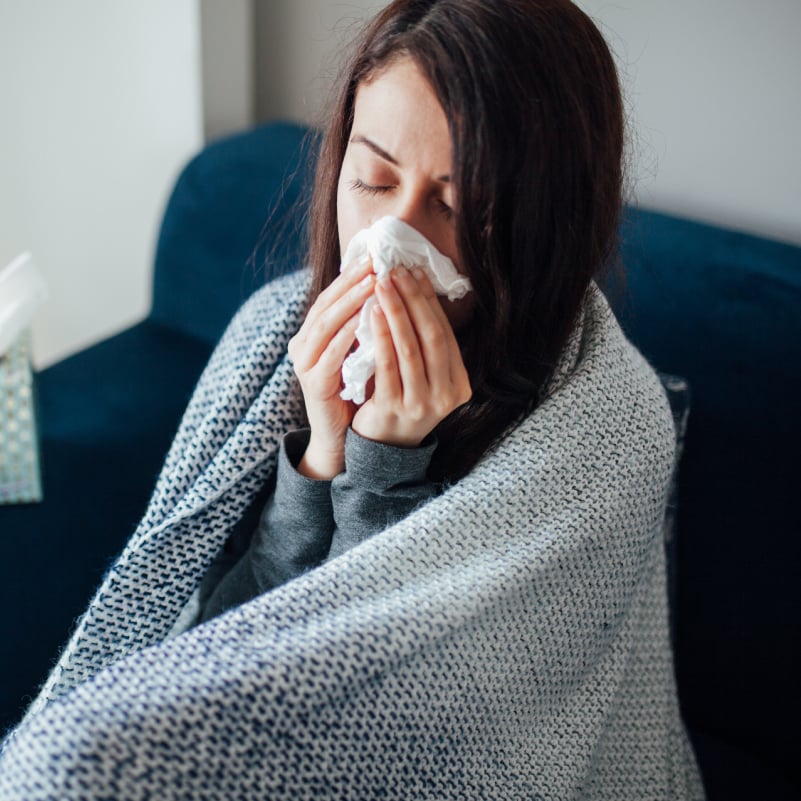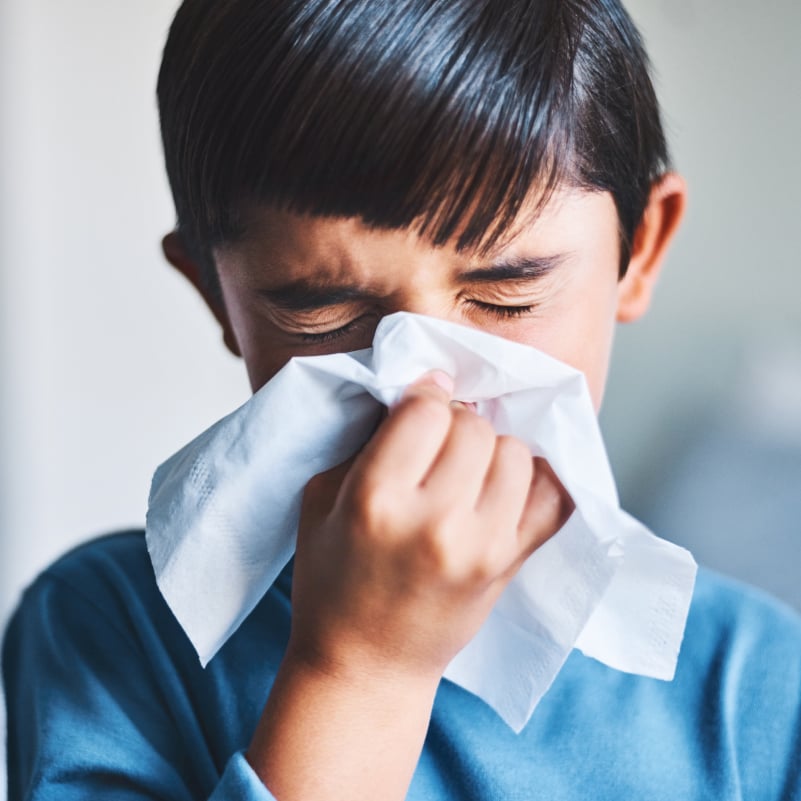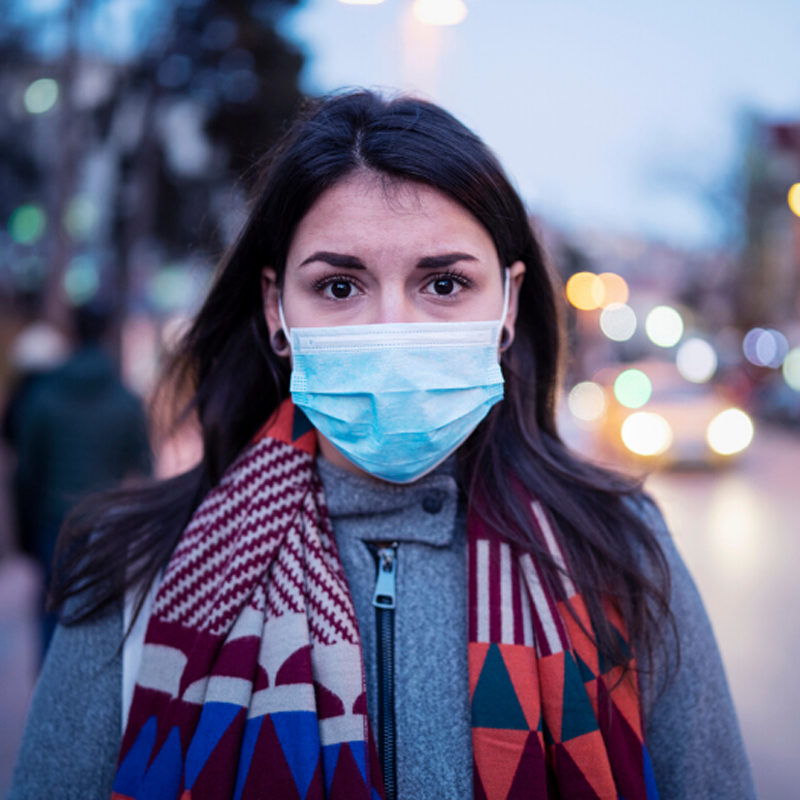*As of the most recent updates from the CDC, the 2021 flu season impacted a much lower number of people than usual in all major regions of the United States.
Current Flu Season Metrics 2021-22
Rochester Regional Health is tracking data for the current flu season. Those numbers can be found on the Flu Season 2021-2022 page.
Final Flu Season Metrics 2020/21
Each flu season, the CDC tracks a few important metrics that help tell the story of how severe the current flu season is compared to previous seasons. Here are a few numbers to sum up the 2020/2021 flu season, running from October 1, 2020 to April 1, 2021.
Mortality - The PIC mortality rate is the rate of deaths attributed to pneumonia, influenza, or COVID-19. This year, the majority of PIC deaths were due to COVID-19. 646 deaths were attributed to the flu.
Pediatric Deaths - Pediatric deaths are the number of deaths of people under the age of 18. In 2019/20, there were 195 pediatric deaths. There was one pediatric death during the 2020/21 season.
Final 2019/20 Flu Numbers
The final data on flu season 2019/2020 was released by the CDC in April as COVID-19 continued to spread throughout the United States.
Between October 1, 2019 and April 4, 2020, the flu resulted in:
- 39 to 56 million illnesses
- 410,000 to 740,000 hospitalizations
- 24,000 to 62,000 deaths
- 195 pediatric deaths
Flu or Coronavirus? Learn the Difference
Health officials are urging people to get their flu vaccine as soon as possible this year to prevent the spread of flu amidst the coronavirus pandemic. Contact your primary care provider to schedule your flu shot or call your local pharmacy for more information.
New York State
New York State reported 157,758 positive cases between October 1 2019 and April 4, 2020. In Monroe County, NY, there were 17 deaths and 5,775 confirmed cases since October 1. Of those confirmed cases, 763 resulted in hospitalization.
Hospitalization rate
A total of 19,713 influenza-related hospitalizations were reported between October 1, 2019 and March 28, 2020. 72% were associated with Influenza A and 27% were Influenza B, which is a reversal of early season numbers when Influenza B was more dominant.
The overall cumulative hospitalization rate was 67.9 per 100,000 population over the same time period. This number is higher than all recent seasons during the same time period, except for the 2017-18 season. Hospitalization rates in children aged 0-4 years old and adults 18-49 years old are the highest on record according to the CDC, surpassing the rate reported during the 2009 H1N1 pandemic.
Influenza A vs. Influenza B
Both strains of influenza cause typical flu symptoms, like fever, fatigue, body aches, chills, sore throat, and cough. It’s unlikely patients would be able to tell the difference between A or B without a lab test. However, Influenza B is slower to develop, which is why it typically appears later in the season. It’s also more likely to impact children and younger adults instead of the elderly. This could explain why more people were infected with the flu earlier in the year over previous years, but the number of hospitalizations and deaths were lower.
Influenza B appeared earlier in 2020
In 2020, Influenza B appeared earlier than usual. Traditionally, Influenza A appears earlier than Influenza B, but that was not the case to begin 2020. Roughly 70% of early flu cases were Influenza B and about 30% were been caused by Influenza A, according to the CDC.
Was the flu vaccine effective in 2020?
The flu shot is developed at the start of each season to protect from strains of the flu. More than 170 million doses of the flu vaccine were administered to fight the 2019/2020 flu virus. At the beginning of the year, the vaccine reduced doctor's visits by 45% overall and 55% in children, but rates among children and young adults were higher earlier in the season compared to recent seasons.
"The vaccine has significantly reduced medical visits associated with influenza so far this season," the CDC announced in its February 21 report.
If you have already received your vaccine for the 2020/2021 season, you don’t need to get a second shot--except children under the age of 9 who are getting vaccinated for the first time.
“While it’s possible to get the flu even if you get the shot, vaccination reduces your risk of getting sick and may lessen the severity of the symptoms if you do,” explained the CDC's Lynnette Brammer.
Rochester Regional tests experimental coronavirus vaccine
How to Treat the Flu
Flu comes hard and fast. While there is no cure for the flu, there are several ways you can alleviate flu symptoms for a more comfortable recovery.
1. Drink Liquids
One way to help your body recover from the flu is to stay hydrated. When you’re sick, your temperature increases and you become dehydrated, causing a myriad of issues like the chills, sweats, dizziness, and thirst.
Water is always best, but low-sugar sports drinks that contain electrolytes can also help you replenish nutrients and calories.
2. Rest
Your body can better fight infection when it is in a sleep state, according to a new study by Rockefeller University Press. The study shows that during sleep, the body’s immune cells attach to infected cells and fight off the virus.
With the flu, it’s recommended that you get as much rest as possible, always stay home from work until you are symptom-free for 24 hours, and do as little physical excursion as possible.
3. Tamiflu
“Medications like Tamiflu is an option for alleviating flu symptoms,” said Dr. Christine Cameron, Primary Care Physician at Medina Family Medicine.
Tamiflu attacks the flu virus in your body, prevents it from multiplying, and reduces flu symptoms. However, Tamiflu is only effective for patients who have tested positive for the flu. Antihistamines and decongestants can also help reduce nasal swelling and itchy, watery eyes.








